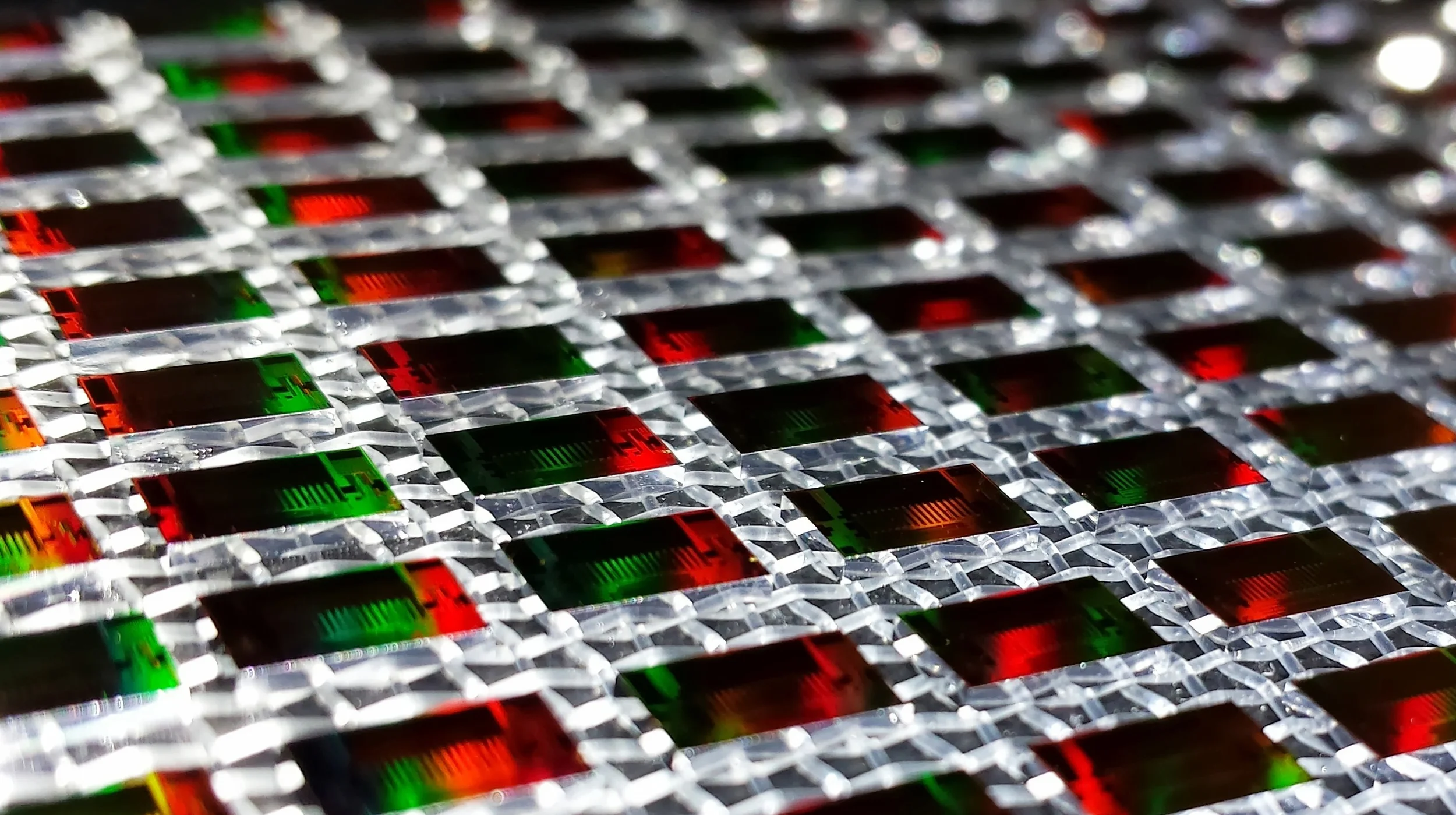Platform Overview
Representation of Sandwich Immunoassay on a Single Microring Sensor
Silicon photonic microring resonators are intrinsically multiplexable sensor arrays capable of bulk refractive index detection as well as specific molecular recognition monitoring. Our group has applied this technology to diverse applications ranging from clinical diagnostics to polymer growth kinetics. The platform leverages existing capabilities in the microelectronics industry to fabricate sensors chips at effective scales. We have applied the technology to protein, DNA, mRNA, miRNA, biotoxin, and virus detection, and we use both label and label-free formats for detection. Commercial applications of the technology to date have been primarily focused on the pharmaceutical space, including immunogenicity, autoimmunity, and cancer biomarker applications. Aside from biological applications, we are currently exploring novel surface modification strategies to expand the utility of the platform.
Recent review from our lab covering optical resonator sensors and biomolecule detection:
Applications of Optical Microcavity Resonators in Analytical Chemistry, J.H. Wade, R.C. Bailey, Annual Reviews in Analytical Chemistry, 2016, 9, 1-25.
DOI: 10.1146/annurev-anchem-071015-041742Emerging Biosensing Approaches for microRNA Analysis, R.M. Graybill, R.C. Bailey, Analytical Chemistry, 2016, 88, 431-450.
DOI: 10.1021/acs.analchem.5b04679
Physical Characterization Using Lipid Bilayer Mimics
Physisorption of Nanodiscs to a Microring Sensor
Interfacing nanodiscs with the silicon photonic microring resonators is an ongoing collaboration between the Bailey and Morrissey labs. Nanodiscs are lipid membrane mimics held together by two membrane scaffold proteins. Through the development of different attachment mechanisms, it has been possible to multiplex the nanodiscs on the rings. This multiplexing allows for high throughput analysis of lipid-protein and protein-membrane protein interactions. In particular, the group has worked to characterize the binding interactions involved in the blood coagulation cascade. Most of the enzymatic reactions that lead to blood clot formation occur at the membrane surface and the activity and binding of the proteins are in part influenced by the local lipid composition and salt concentrations. With the combined technologies of nanodiscs and microring resonators it is possible to obtain protein binding constants for 31 different lipid compositions simultaneously. Furthermore, by using salt gradients, it is possible to observe binding in real-time, over a variety of conditions. These technologies allow for in-depth exploration of blood coagulation.



